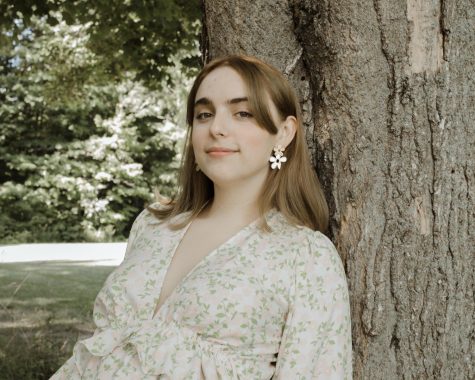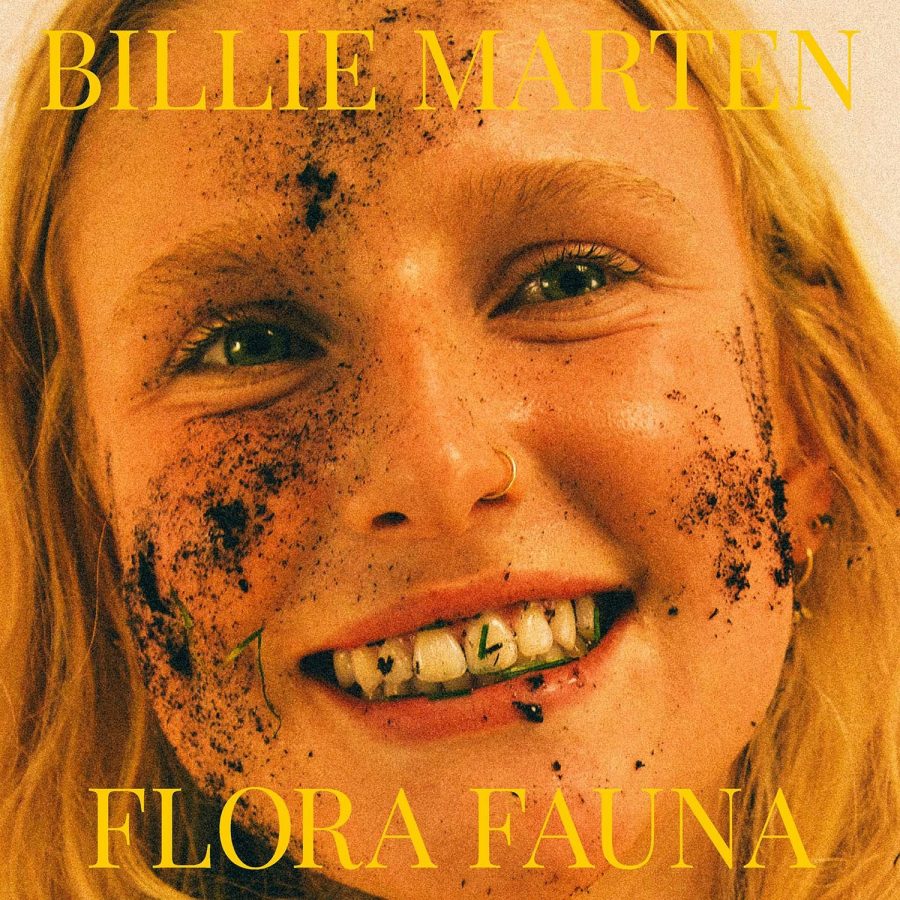From meadows to mountainsides, Billie Marten’s newest album promises perfection
The album photo for Billie Marten’s newest release, Flora Fauna.
With an adoration for fresh melodies also comes a loss of memory when asked about my musical journey. Within the tumbleweeds and winds of the past four years, hundreds of gorgeous tracks have been completely swept up in the dust, vanishing forever from my mind.
However, with the new often comes a memory of the old. This is exactly what happened a few months ago when British singer-songwriter Billie Marten strode elegantly back onto my radar with the release of her single, “Garden of Eden.” Her music has always been my perfect cup of tea, and this single was absolutely no different with a style that melds the lines between seasons, colors, and times of day.
Upon further exploration, I discovered that “Garden of Eden” was getting its own album later in the year, a release that chimed in harmoniously just a few days ago. Beginning with the hollow drum beats of my already adored track, Marten’s Flora Fauna is truly a journey traversing many flower fields, mountainsides, and waterfalls.
Automatically following the bluish-green hues of “Garden of Eden,” listeners are introduced to another previously released single, “Creature of Mine.” This track feels like stomping in muddy meadows, your feet adorned in well-loved boots and dainty white socks. Its melodies feel like being friends with woodland creatures, its lyrics like floating in shallow river beds.
Discordantly, “Human Replacement” takes place entirely after dusk. However, instead of feeling like a soft goodnight, it is rather reminiscent of mischief. From trampling toes to hushed voices, the colors shift from yellows and pinks to cerulean blues and jade greens. On top of this, the energy in the room shifts entirely to fit the song, an intentionally divergent characteristic. By doing this, Marten shows both sides of her style, displaying her full capacity to tell a story.
With an eclectic beat and soft hums, we are introduced to what is likely my favorite track of Flora Fauna. Evocative of laying under the crisp sunshine as you nod off to sleep, “Liquid Love” is the essence of dull summer days. As well as personifying the yellow of those moments spent alone, it also pushes to the forefront all the colors of time spent with those you love. Despite all the words in the English language, none can describe the beautiful discrepancies of “Liquid Love”—it is an absolute must-listen.
Moving onward and upward past this track, we are introduced to “Heaven.” Out of every song on the album, the melodies at the gates of “Heaven” stand out as the most poignantly peachy. However, the rest of the song takes on a similar feeling to its sisters, portraying an effervescently sweet inflection of feelings.
Acting as either side of a perfection sandwich, the following track, “Ruin,” is just another one of my absolute ideals. As a fraternal twin, this track is synonymous with meadows, but instead of being immersed within, the listener gazes down upon them through train windows. Speeding past as daytime picnic and nighttime escapades occur, there is a distance between “Ruin” and its predecessors. While much the same, it is satisfyingly different.
Unlike this, “Pigeon” is noticeably disparate, but in the best way possible. Like bandaging one’s self up in soft, hand-knit blankets at the end of a long day, this track feels like the whimsy waves that still waver after a day spent in the ocean. It is faint and nostalgic whilst continuing a narrative, parading upon gossamer clouds and setting an example for the next three tracks.
While the following two songs—”Kill The Clown” and “Walnut”—made a similarly contrasting impact, they each have their own stylistic elements that make them what they are. While “Kill The Clown” is like sky blues and rolled down car windows, “Walnut” defines dimly lit rooms and lulling lullabies. Nevertheless, both knit together in an alluringly rounded way.
After what can only be described as an emotionally taxing journey, the final track, “Aquarium,” feels like a warm welcome to all the feelings that have been dealt. I found myself wanting to close my computer screen and stare at my ceiling, and even though I knew they wouldn’t, there was a part of me that expected stars to appear on the surface in front of me. Like “Garden of Eden,” everything about “Aquarium” was like wading in pools of aquamarine waters topped in mossy lily pads.
Akin to all other songs within Flora Fauna, it found the balance between every emotion, signifying the perfection that can be found within those simple moments. Not only am I grateful for my reintroduction to Marten’s music, but her newest album has manifested my newfound fondness of her artistry—a fondness that will not soon loosen its grip upon my listening habits.

Jessie Warren is a senior, and this will be her second and final year as a staff member of The Central Trend. Ever eager to write, she finds a sort of...

























































































